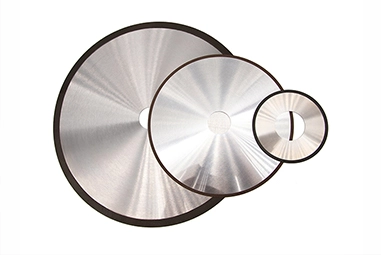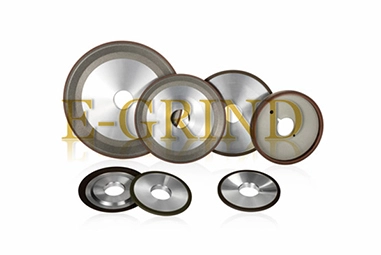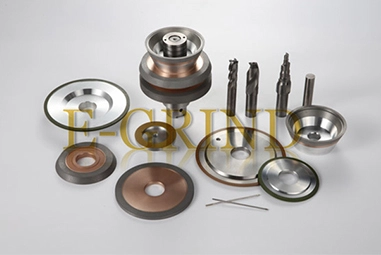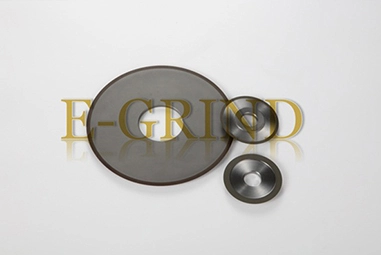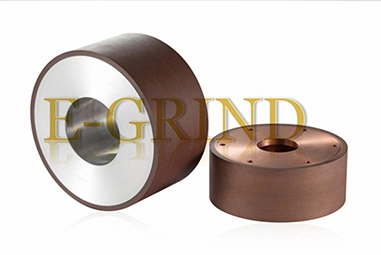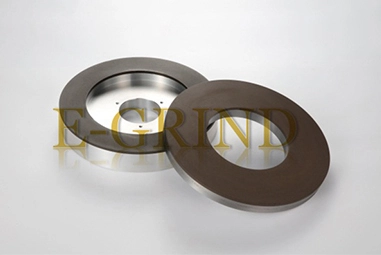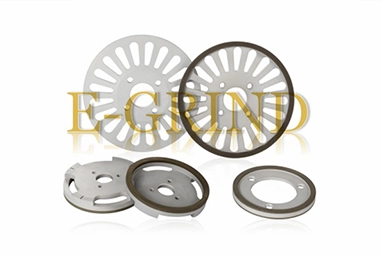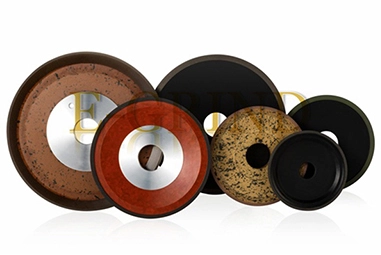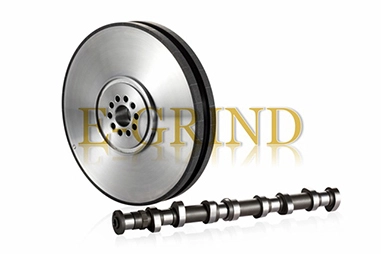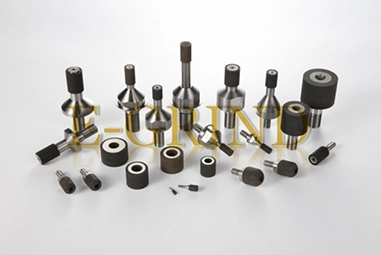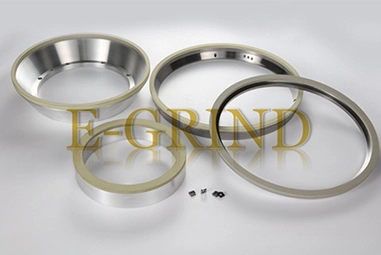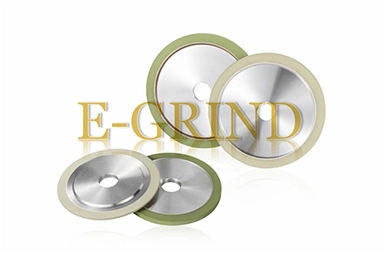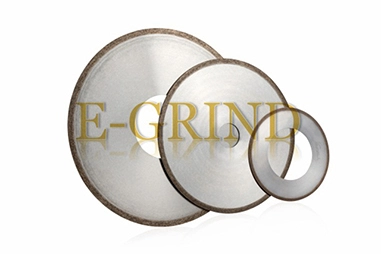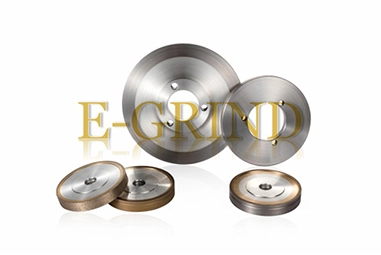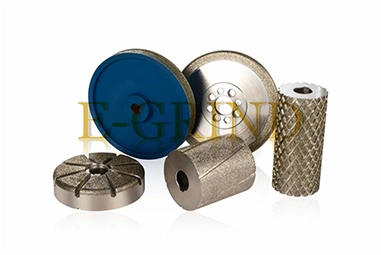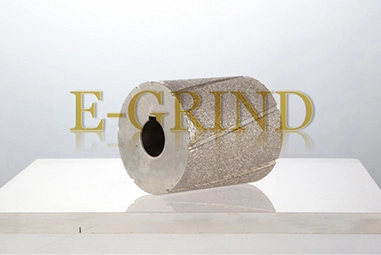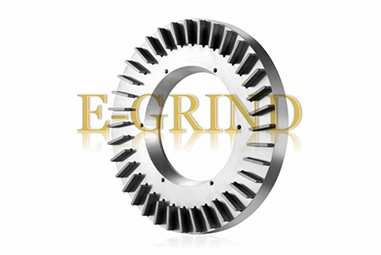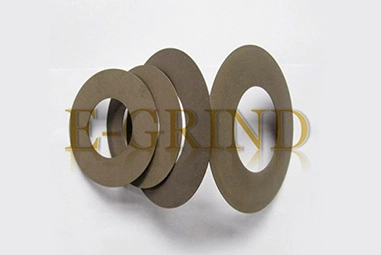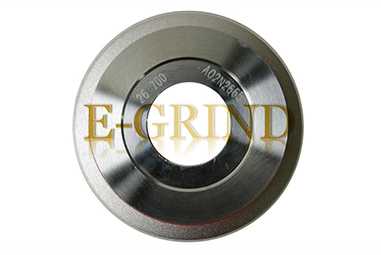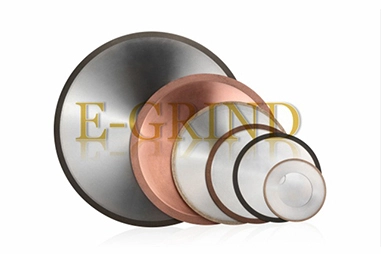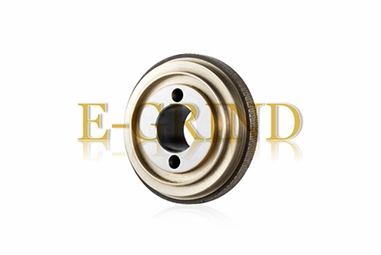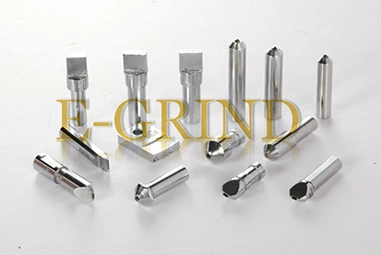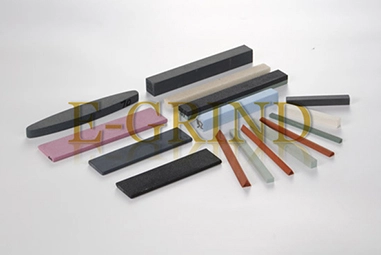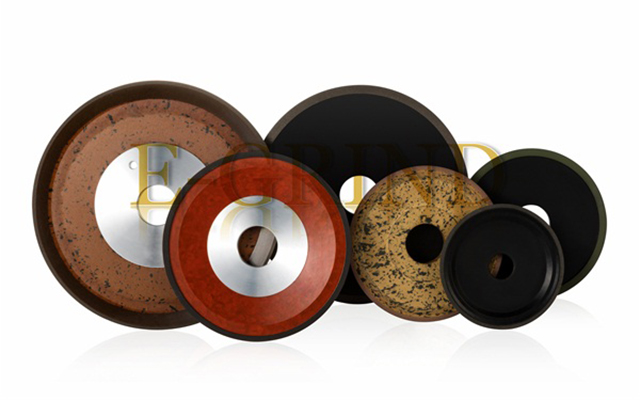Resin bond grinding wheels are a type of consolidated abrasive tool that uses resin as a bonding agent to consolidate abrasive grains into a definite shape. These wheels are made by mixing resin with metal powder, metal oxide, common abrasives (such as corundum, silicon carbide, etc.) as fillers. They primarily consist of three parts: abrasive grains, resin bond, and pores. These three parts are often referred to as the three elements of consolidated abrasives.
Features of E-Grind's Resin Bond Grinding Wheels
Resin bond grinding wheels are made from thermosetting resin, which is mixed with abrasive grains and other additives to form a hardened material. This type of bond is known for its excellent bonding strength, which helps prevent the abrasive grains from loosening during use.
The hardness of the resin bond can vary depending on the application. For instance, softer bonds are suitable for grinding hard materials (such as carbides), while harder bonds are more suitable for grinding softer materials (such as aluminum).
Resin bond grinding wheels also have high heat resistance and moisture resistance, making them ideal for both wet and dry grinding applications. Additionally, they are easy to dress, meaning that abrasive grains can be easily exposed to maintain sharp cutting edges.
How Do Resin Bond Grinding Wheels Work?
When using resin bond diamond grinding wheels, the abrasive grains on the wheel's surface come into contact with the workpiece. As the wheel rotates, the abrasive grains remove material from the workpiece, forming the desired shape or surface finish.
The grinding process generates heat, which can cause the abrasive grains to become dull and lose their cutting edge. To prevent this, the wheel needs to be dressed periodically, which means using a tool to remove any debris or dull abrasive grains from the wheel's surface, exposing fresh abrasive grains.
Precautions
Resin bond grinding wheels have poor water resistance and alkali resistance, and a short shelf life. Care should be taken to protect them from moisture and alkalines during production and use.
After working for some time, the grinding wheel should be dressed to restore its grinding performance and correct geometry.
A rotational test and static balance test should be conducted before use to ensure the wheel does not crack at working speed, and to prevent machine vibration during operation.


